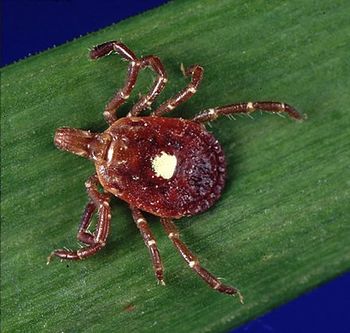
New Antifungal Drug Olorofim Shows Efficacy in Treating Resistant Fungal Infections
John Rex, MD, FACP, discusses the promise, precision, and challenges of this first-in-class antifungal following phase 2b trial results.
A novel antifungal agent, olorofim, is demonstrating significant promise in treating life-threatening invasive fungal diseases (IFD), particularly in patients with few or no other treatment options. The therapy, developed by F2G, is the first in its class and has shown encouraging results in a phase 2b open-label trial, prompting discussion about its clinical utility, stewardship integration, and future risks.
John Rex, MD, FACP, chief medical officer at F2G, spoke with Contagion to discuss the clinical challenges of fungal diagnostics and how olorofim may fit into the future of antifungal care.
“What challenges don’t remain would be a better version of that question,” Rex said when asked about the difficulty of diagnosing IFD early enough to intervene effectively. “Fungal infections are—in one sense—easy to diagnose when you biopsy a place where the fungus is. But in another sense, you don’t really want to do that; you’d actually like to have alternative ways to diagnose.”
He pointed to the limited number of serologic tests available, noting that for some of the most dangerous fungi, “those tests don’t always work all that well.” According to Rex, “sometimes it’s harder to think of the idea of a fungus than it is ultimately to diagnose it.”
The primary endpoint, a composite global response measured at day 42, was achieved in 28.7% of patients. By day 84, 27.2% had maintained that response. When stable disease was included in the definition of success, the numbers rose to 75.2% at day 42 and 63.4% at day 84. Clinical responses alone were seen in nearly 60% of patients by day 42.
The phase 2b trial enrolled 204 patients across 11 countries, with 203 receiving olorofim and 202 confirmed to have invasive fungal disease. Participants were infected with notoriously difficult pathogens including Aspergillus spp. (including 22 azole-resistant strains), Lomentospora prolificans, Scedosporium spp., and Coccidioides spp.. These organisms are often resistant to conventional antifungals, making the study population particularly high risk.
When asked how olorofim fits into antifungal stewardship and diagnostic pathways, Rex emphasized the drug’s specificity, “The thing to know about olorofim to start with is that it’s a special drug for special patients. You need to know what you’re treating if you’re going to use olorofim.”
He explained that olorofim targets dihydroorotate dehydrogenase (DHODH)—an enzyme critical to the pyrimidine biosynthesis pathway, but does so selectively in certain molds. “All of us have a version of this enzyme, but we don’t all have the same version. It just turns out that—for whatever reason—Aspergillus and all of its cousins… have almost the same enzyme.”
These include Lomentospora, Scedosporium, Rasamsonia, and the dimorphic fungi such as Coccidioides and Histoplasma. By contrast, Rex noted that the enzyme versions in Candida, Cryptococcus, Mucor, bacteria, and parasites are markedly different—reinforcing the need for accurate fungal diagnosis before initiating therapy.
Treatment durations in the trial varied, with some patients receiving olorofim for up to a year, particularly for infections in hard-to-treat areas such as bone and brain. The drug was generally well tolerated, with 10% of patients experiencing liver enzyme elevations that resolved with dose adjustments or discontinuation. No treatment-related deaths were observed.
On the question of resistance, Rex was realistic but cautiously optimistic.“Like every antimicrobial ever invented, the organisms will one day figure out how to escape. It’s just the nature of the universe.”
Still, he noted that olorofim’s target enzyme is “remarkably well conserved” among Aspergillus-related species, and that resistance has not yet emerged in clinical use. “We say that basically, olorofim has a unimodal MIC distribution. There’s one peak. There’s not a second peak out in the distance at higher MICs.”
To date, the data—recently published from roughly 200 treated patients—shows no emergence of resistance during therapy, including among those enrolled in compassionate access programs. Rex expressed concern about potential agricultural use of olorofim, which could compromise its efficacy in humans. “There is interest in using olorofim to take care of diseases in wheat and other important grains… That’s something we all need to think really carefully about.”
He added that olorofim’s oral formulation also sets it apart, “It kills the fungus and it’s also a drug. It’s a pill. And that’s rare. It’s hard enough to find an antifungal—much less to find one that’s a pill you can actually take for months and months on end.”
With an average treatment duration of six to seven months in the trial, and some patients exceeding that, olorofim represents a potential new standard in the treatment of difficult, resistant IFDs. Although, phase 3 trials will be needed to solidify its role in broader clinical practice.
References
F2G, Ltd. F2G Announces Publication in The Lancet Infectious Diseases of Phase 2b Data Demonstrating Positive Therapeutic Responses in Patients with Serious Invasive Fungal Diseases Treated with Oral Olorofim. GlobeNewswire. Published June 26, 2025. Accessed June 26, 2025. https://www.globenewswire.com/news-release/2025/06/18/3101340/0/en/F2G-Announces-Publication-in-The-Lancet-Infectious-Diseases-of-Phase-2b-Data-Demonstrating-Positive-Therapeutic-Responses-in-Patients-with-Serious-Invasive-Fungal-Diseases-Treated-.html
Maertens JA, Thompson GR 3rd, Spec A, et al. Olorofim for the treatment of invasive fungal diseases in patients with few or no therapeutic options: a single-arm, open-label, phase 2b study. Lancet Infect Dis. Published online June 17, 2025. doi:10.1016/S1473-3099(25)00224-5
Newsletter
Stay ahead of emerging infectious disease threats with expert insights and breaking research. Subscribe now to get updates delivered straight to your inbox.
































































































































































































































































































